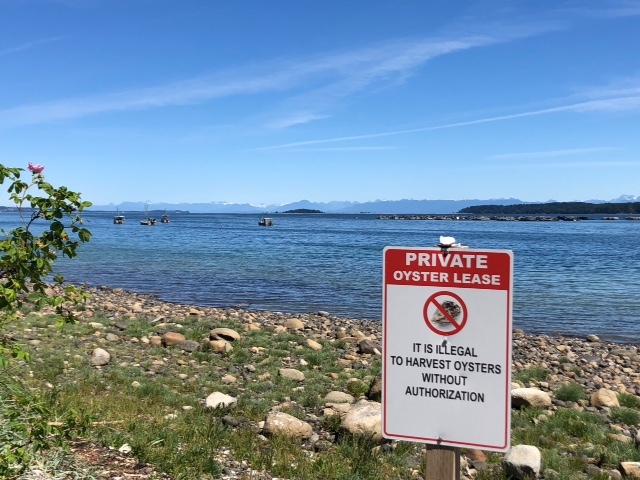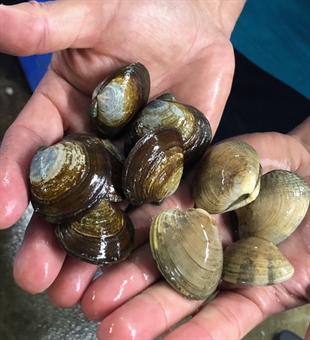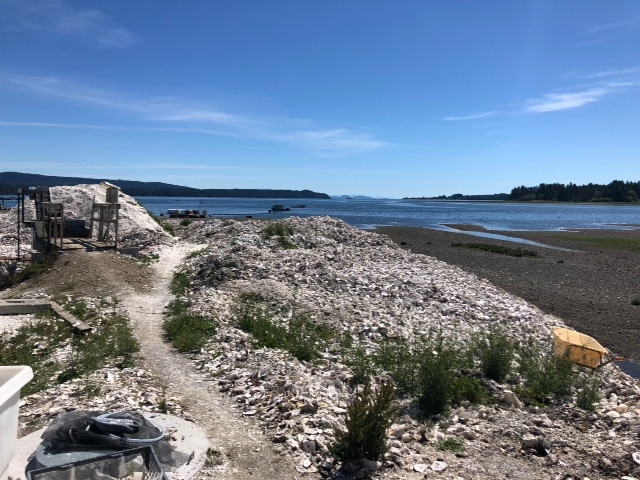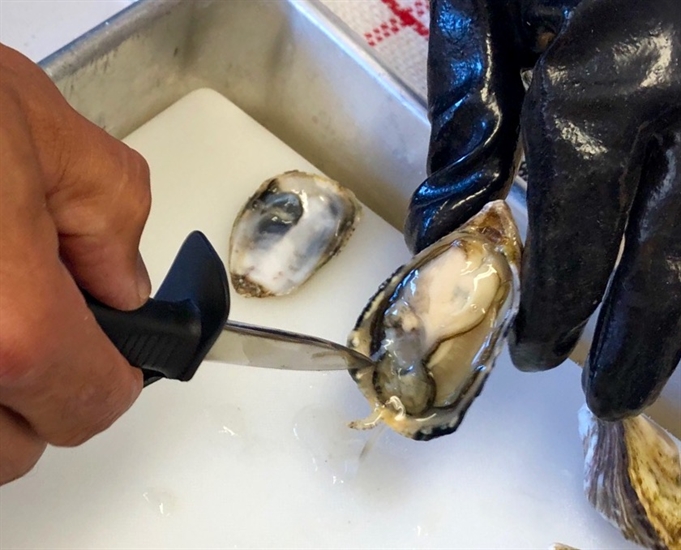
(DON THOMPSON / iNFOnews.ca)
June 17, 2019 - 12:00 PM
OPINION
I cannot remember exactly when I ate my first oyster…but it was sometime between my learning to walk and entering first grade. My entire family - mother, father, sister, brother and myself - were fanatical oyster lovers.
Growing up in Florida meant oysters from the Gulf of Mexico. Specifically, oysters from a shallow, 30-mile-long bay in the Florida panhandle called Apalachicola. Aficionados seek Apalachicola oysters from the Big Bayou…a pristine section on the saltier western part of the bay near St. Vincent Island.
Since my first Apalachicola oyster, I have traveled the world for more than a half-century in search of tasty little bi-valves…eating tens of thousands of them from bays, inlets, sounds, coves and lagoons. Oysters have no safe harbour from me or my family. Even though mom and dad are now passed, my brother, sister and I continue our obsessive foraging for great oysters.
If oysters networked or engaged in social media, my entire family would have been targets of scurrilous Tweets and horrendous Facebook posts. In the world of oysters, we are among their “Most Wanted.” We were - and remain - unmerciful consumers.

This sign warns poachers that only Oyster “farmers” who own leases on Baynes Sound on Vancouver Island can harvest bi-valves.
(DON THOMPSON / iNFOnews.ca)
When we gather to eat oysters - raw on the half shell, barbecued on a grill, fried with a Tabasco-laced cocktail sauce or as the primary ingredient in stew - the remnants resemble the start of an ancient shell mound.
We measure oysters not so much in dozens…but in bushels. My siblings and I have on more than one occasion devoured as many as 100 oysters over a span of a few hours. We aren’t gluttons by any means…we simply share a DNA that includes an abiding love and deep appreciation for the flavours and textures of these little jewels.
After all this time, I consider myself an oyster connoisseur…able to detect subtle differences as one does with great wines. And despite eating local oysters in dozens of countries in every hemisphere, if you ask what my favourite oyster is…and I’m likely to respond with, “What’s your favourite kiss?”
As with wines, great oysters can be found almost everywhere. Without bogging down into a clinical discussion of species, suffice it to say there are seven species of oysters worthy of a search…Eastern, Olympia, Pacific, Kumamoto, Belon, New Zealand Flat and Sydney Rock.
You might ask, “What about Malpeques or Blue Points or Kusshis?” Yeah, well, species is only one of four factors that make an oyster unique…species, environment, cultivation and branding. So, if you recall math class, the number of varieties of oysters around the world equals the unique permutations of these four factors. Okay, read on…I promise, that’s as technical as I’m going to go here.

Fanny Bay Oysters farms Savory Clams (L) and Manila Clams (R).
(DON THOMPSON / iNFOnews.ca)
Branding is no less important with oysters than with wines or automobiles…any product. It’s only right and predictable that people who live in Prince Edward Island love Malpeques. And British Columbians love Fanny Bay oysters. And French people in Brittany love Belons. But the truth is…if you’re willing to spend the money you can get oysters from just about anywhere.
One thing is certain about oysters. You want to eat oysters that live in “clean” waters. You are what you eat when it comes to oysters. The little rascals don’t motor around…they stay in one place and filter phytoplankton…along with whatever else is suspended in the water. Polluted waters might not kill an oyster…but they can kill humans. Subtle and not-so-subtle differences in flavour, texture and size are determined by what floats by each oyster.
With wine, the word “terroir” describes the environment’s impact on flavour. With oysters, the environment has a similar impact…and we call it “merroir.” For example, an oyster from an estuary where there is both salt and fresh water will be less salty. An area with more seaweed…tastes more herbaceous.
Regardless of where they are from…it takes three to four years to grow an oyster. Oysters are harvested in the “wild” and from “farms.” Both methods produce excellent oysters. Again, it’s it’s all about the quality of the water.

Oyster shells mound on the shores of Fanny Bay Oyster. Some return to the water as homes for oyster “seeds" and some as a ground for fertilizer, chicken feed and even road paving.
(DON THOMPSON / iNFOnews.ca)
There’s no real evidence that oysters are aphrodisiacs. They contain phosphorus and iodine, which might increase stamina, and zinc boosts testosterone…but research doesn’t validate the old wives’ tales about sexual potency.
There are plenty of anecdotes…like Casanova eating 50 oysters each day to become a better lover. And oyster folks worldwide no doubt don’t mind such stories going viral. The most interesting sexual fact about oysters…they change sex at least once during their lives.
Last week, I visited Fanny Bay Oysters on Vancouver Island…started by three “farmers” 30 years ago and now part of the Taylor Shellfish Family of Farms of Washington state…which started farming shellfish in the 1890s. The oysters branded by this company are among my favourites...and they’re local, so easy to find.
Their brands - Fanny Bay, Royal Miyagi, Golden Mantle, Kusshi and Sun Seeker - are diverse in flavour and size. Fanny Bays are Pacific oysters from Baynes Sound…they deliver a firm, clean meat that reflects the minerals of the water there.

A Sun Seeker oyster at the Fanny Bay Oysters plant on Vancouver Island. Raw oysters should be consumed as close to live as possible and no more than 10 minutes after shucking.
(DON THOMPSON / iNFOnews.ca)
Royal Miyagis start growing in deep-sea suspension trays before being spread on Fanny Bay’s beaches and tumbled by natural wave action. They are fat and balance sweet and salty. Golden Mantles spend their lives in deep-water trays and are handled regularly, which produces a easy-to-shuck golden shell and meat that is firm, sweet and light in style.
Kusshis are farmed just south of Fanny Bay for the company by Stellar Bay Shellfish Farm…but look and taste completely different from other Fanny Bay bi-valves. They have smooth, smaller shells and the meat fills the shells, delivering a unique creamy flavour. Sun Seekers - the latest brand - are plump oysters…almost as deep as they are long. They are sweet and a little salty…and the extra small size is clean and really tasty.
If you’re not careful…you can be fooled by marketing. All oysters are not created equally. A restaurant might advertise they serve Fanny Bay Oysters…but it might not be ones farmed by the highly respected company of the same name.
You see, Fanny Bay is a geographic area…and oysters from that location can be called Fanny Bay Oysters. But, be aware…those oysters might not abide by the same stringent health and safety practices and quality control as those from the Fanny Bay Oyster company.
Some people won’t even entertain the thought of eating an oyster…cooked or raw. My brother, sister and I always respond, “That’s okay…all the more for those of us who really love them.”
— Don Thompson, an American awaiting Canadian citizenship, lives in Vernon and in Florida. In a career that spans more than 40 years, Don has been a working journalist, a speechwriter and the CEO of an advertising and public relations firm. A passionate and compassionate man, he loves the written word as much as fine dinners with great wines. His essays are a blend of news reporting and opinion.
We welcome your comments and opinions on our stories but play nice. We won't censor or delete comments unless they contain off-topic statements or links, unnecessary vulgarity, false facts, spam or obviously fake profiles. If you have any concerns about what you see in comments, email the editor.
News from © iNFOnews, 2019